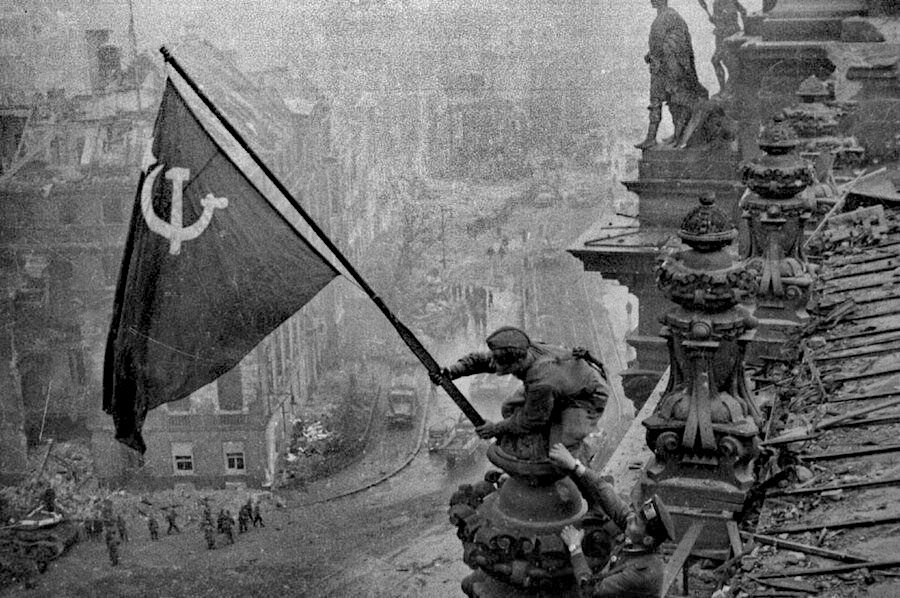As Putin has pursued war with Ukraine, he has repeatedly invoked the memory of World War II. Indeed, at certain moments he has made his invasion sound like a continuation of what Russians call “The Great Patriotic War.” This month, historian Karen Petrone discusses the way World War II has been remembered in Russia and argues that the way that memory has been manipulated helps Russia define itself against “The West.”
In Vladimir Putin’s February 2022 speech announcing Russia’s “special military operation”—in fact a full-scale invasion of Ukraine intended to topple the Ukrainian government—the Russian president framed the current Russia-Ukraine conflict through the lens of the horrors of the Second World War.
He argued that the people of Eastern Ukraine’s Donbass region who wanted to declare independence from Ukraine and join Russia were experiencing “humiliation and genocide perpetrated by the Kiev regime.” His mission, he claimed, was “to demilitarize and denazify Ukraine.”
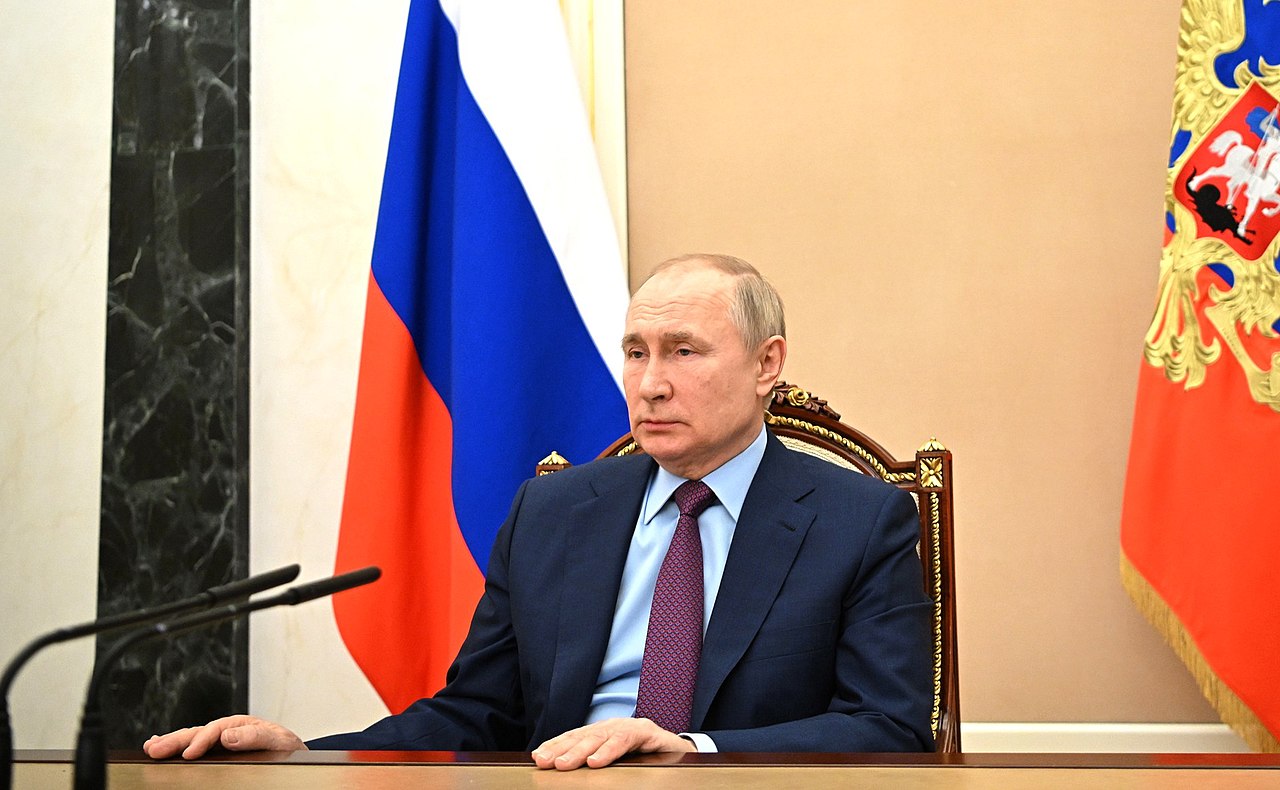
In Putin’s retelling, Russia, though it was the country launching an invasion, stood for the heroic Soviet Union during the “sacred” Great Patriotic War (1941-1945), protecting the world from Nazi genocide. Putin called the Ukrainians, whose territory Russia’s armies were about to invade, “far-right nationalists and Neo-Nazis” who, backed by their NATO allies, were committing “genocide” against Russians.
In justifying the timing of the “special military operation,” Putin cited a historical lesson drawn from the Soviet Union’s experience in World War II (WWII). He admitted that the Soviet Union had made a mistake in trying to “appease” the “potential aggressor” in 1940 and 1941 and failed “to defend itself from an imminent attack” until it was “too late.”
In order not to repeat this mistake, Putin ordered the invasion of Ukraine to “stop that atrocity, that genocide of the millions of people” in the Donbass. According to Putin, the invasion was necessary to prevent future NATO-backed “Nazi” aggression, which Putin implicitly compared to the Nazi Holocaust against the Jews.
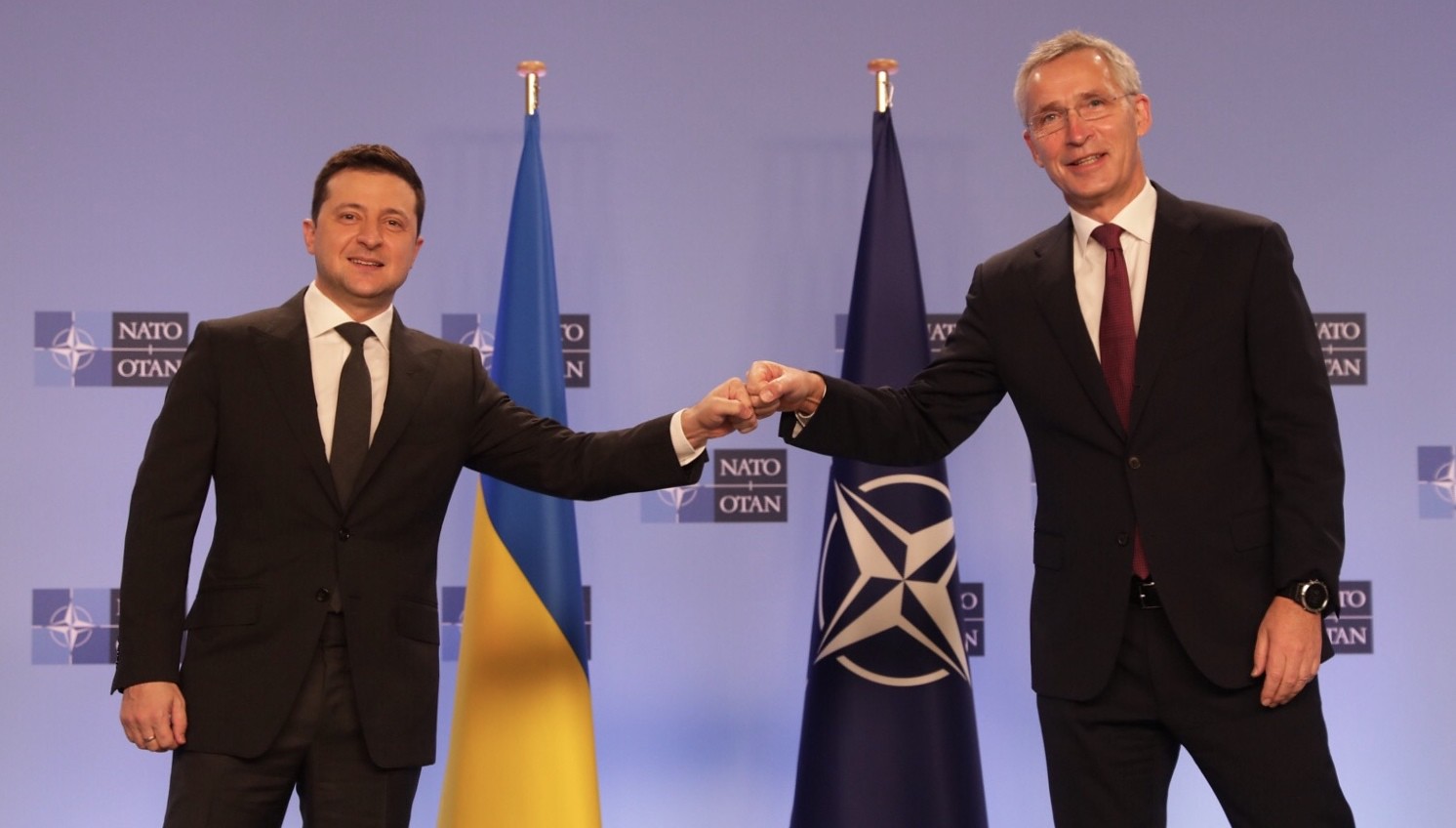
In Putin’s remarks, the Second World War exists both in the past and in the present. Putin’s speech creates a sharp “us” versus “them” divide through this contemporary reimagining of the war, with the United States, NATO, and Ukraine branded as Nazis/Fascists while Russia stands for the heroically anti-Fascist Soviet Union.
This reinterpretation of the Second World War mixes up the two warring sides, as in a kaleidoscope, and reshapes them into a pattern that reinforces Russia’s existential divide from the West. Because Nazism has been so firmly rejected by world actors after 1945, this stark representation of Russian inherent goodness versus Western/Ukrainian Nazi evil is a dangerous falsehood.
The Russian interpretation of the Second World War serves as a major conceptual tool to make the West “the other” both in Putin’s own thinking and in broadly circulated propaganda about the Ukraine war in the Russian media. These representations employ both Second World War and Cold War tropes to produce a streamlined justification for aggression against Ukraine now, and potentially against NATO forces later.
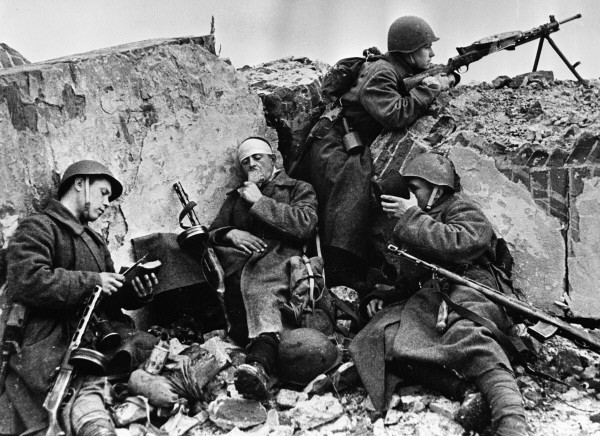
Of course, Russia is not alone in its fixation on the Second World War, and many of the other countries in the region, remembering their occupations and humiliations by the Nazis and Soviets and their struggles to regain independence, also view current European events through the prism of their wartime experience. So does the United States to a lesser degree.
But the intensity of Russia’s preoccupation with WWII and the way that the mythologies of the “Great Patriotic War” inhabit both the past and the present are unique. This article seeks to explain why the living ghosts of the Second World War haunt Russian interpretations of the Russia-Ukraine War, and how the tragic and violent events of the 1940s are echoed and replayed both in Russia and Ukraine today.
Nazis, Soviets, and Ukrainians
Putin’s speech last year alluded to “appeasing” Adolf Hitler in 1940 and 1941 but omitted a most salient event impacting Russian-Ukrainian relations today: the signing of the Hitler-Stalin non-aggression pact in August 1939. This treaty included a secret protocol in which Hitler and Stalin agreed to divide Eastern Europe between them.
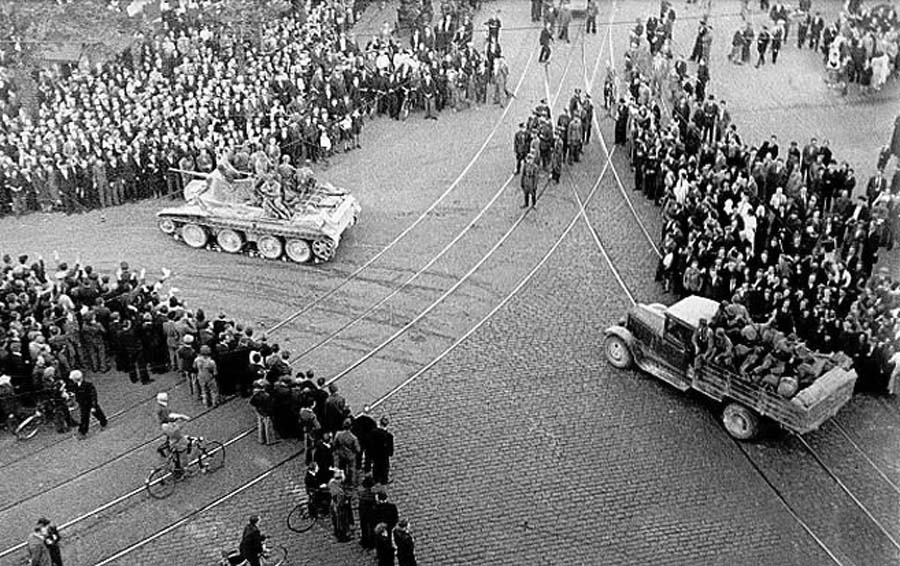
Stalin then invaded the three Baltic states of Estonia, Latvia, and Lithuania, annexed portions of Eastern Poland to the Belorussian Soviet Republic and the Ukrainian Soviet Republic (establishing the borders of Belarus and Ukraine today) and claimed Moldova from Romania. Between 1939 and 1941, Stalin sought to Sovietize these new territories, carrying out a significant number of arrests and deportations.
After the invasion of the Soviet Union on June 22, 1941, Nazis occupied these territories and were met as liberators by some populations that had just endured two years of brutal Soviet occupation. Portions of the population in the Baltic states and Western Ukraine joined the Nazis in their fight against the Soviets.
In Western Ukraine, Ukrainian nationalist leaders including the controversial Stepan Bandera collaborated with the Nazis against the Soviets, hoping that the Nazis would allow Ukraine to exist as an independent state. These hopes were dashed, and Bandera and other nationalist leaders were arrested by the German secret police.
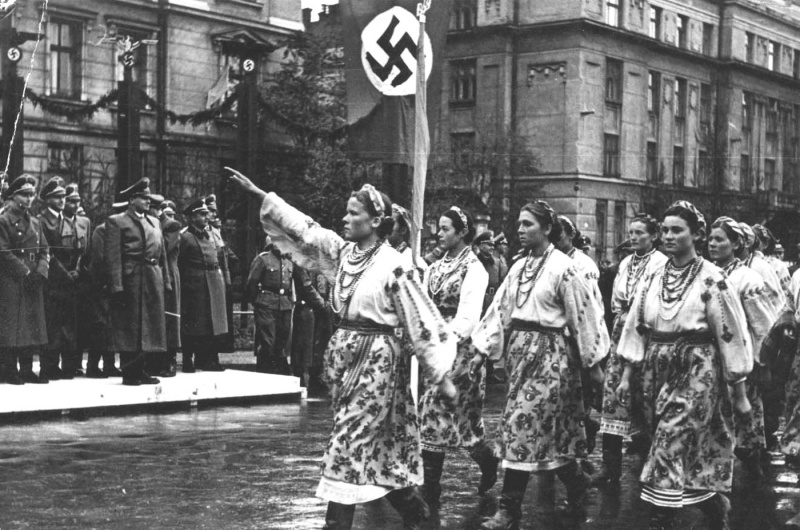
During the Second World War, Ukrainian nationalists, opportunists, and other Nazi sympathizers in Ukraine actively participated in the German armed forces, in pogroms against both Jews and Poles, and in carrying out the Holocaust. Some of these actions were motivated by Ukrainian nationalism, others by anti-Soviet sentiment which often took on antisemitic overtones (since Nazi sympathizers called communism a “Jewish” ideology), and still others by the constrained choices of able-bodied men hoping to survive the horrifically violent Nazi occupation.
After the Soviets reoccupied these territories in 1944, Ukrainian nationalists continued an anti-Soviet guerilla insurgency that only waned in the early 1950s, while the Soviets arrested and deported Ukrainian nationalists through the end of the Stalin era and beyond.
While millions of Ukrainians fought against the Nazis as part of the Red Army during WWII, approximately 250,000 Ukrainians joined the German forces and participated in the Holocaust and other German atrocities. It should be noted that members of many Soviet nationalities, including Russians, collaborated with the Germans. In present-day Russian rhetoric, however, Russian collaboration is ignored and Ukrainian collaboration with the Nazis during the Second World War serves as a kind of “original sin.”
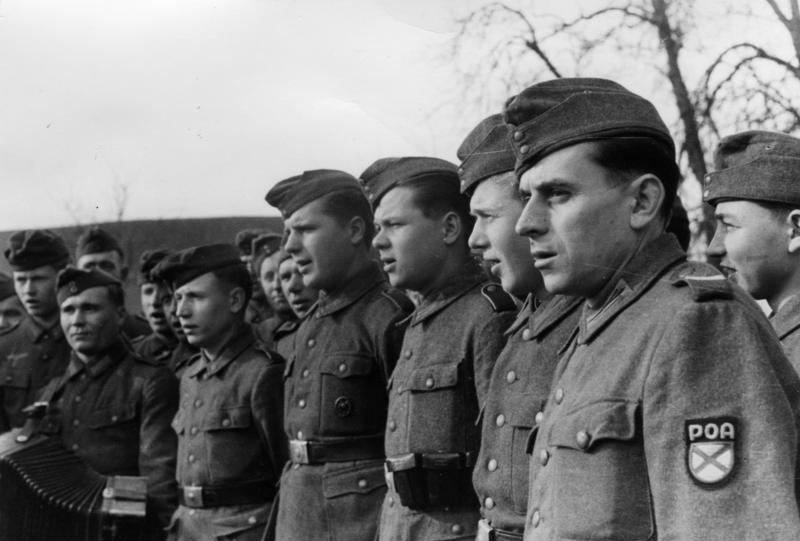
This “sin” taints the contemporary democratically elected Ukrainian government as “Nazi,” despite the fact that Far Right parties remain on the political fringe in Ukraine today and attract very few voters. The President of Ukraine Volodymyr Zelenskyy is himself of Jewish origin and thus a very unlikely Nazi leader.
Nevertheless, Putin and Russian propagandists frame the war as one against Nazism, in which all Ukrainians bear the responsibility for the pro-Nazi actions of a fraction of the Ukrainian population during WWII. This rhetoric dehumanizes “Nazis” for the way that they treated others during the war, and paradoxically, the “Nazi” label paves the way for the Russian government to dehumanize and then commit horrific violence against the Ukrainians.
The violence of the Second World War is transposed onto the Ukrainians who are themselves not the Nazi perpetrators but the victims of violence. Because of indiscriminate Russian attacks on civilians and civilian infrastructure, use of rape as a weapon, and kidnapping of Ukrainian children, it could be argued that it is Russia’s war effort that contains genocidal tendencies.
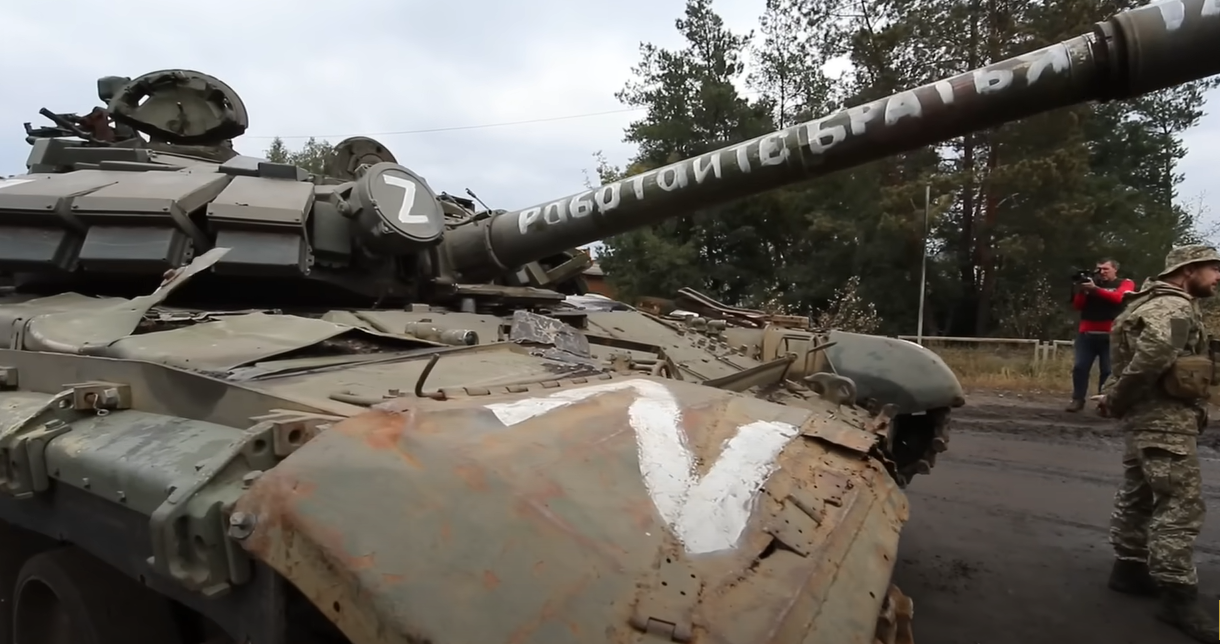
Putin’s use of the Second World War as a lens through which to view the world also has a history that extends from 1945 to the present. Because of the devastating loss of 27 million Soviet citizens in WWII, virtually every Soviet family was affected, and the remembrance of the war held deep personal significance for the Soviet population, and, after 1991, for the Russian population.
Soviet rhetoric (like Putin’s) tended to gloss over the 1939-1941 collaboration between Hitler and Stalin, focusing instead on the dramatic moment of the Nazi invasion of the Soviet Union. What the Soviets called “The Great Patriotic War” began only on June 22, 1941.
World War II and the Legitimacy of the U.S.S.R.
In the immediate postwar years, commemoration of the Great Patriotic War was muted by Stalin because the Soviet government sought to conceal the horrific costs of the war. Yet local commemorations were not forbidden, and after Stalin’s death in 1953, significant grassroots attempts to commemorate the heroes and victims of the Second World War garnered increasing official support from Communist leaders. Both modest and grandiose monuments arose across the Soviet Union to remember the sacrifices of war.

In the 1960s and through the early 1980s as the Soviet economy stalled, and Communist ideology ceased to be as powerful a mobilizing device as it had been in earlier years, the Soviet leadership, and especially Leonid Brezhnev (Soviet leader from 1964-1982) began to rely on victory in the Great Patriotic War as the central event justifying Soviet legitimacy, and “the Victory” often overshadowed the Russian Revolution of 1917 as a founding event.
This “cult of the Great Patriotic War” was broadly popular among Soviet citizens, generating films, songs, literature, museums, gatherings of veterans, and celebrations of Victory Day (May 9). World War II became ubiquitous in Soviet culture.
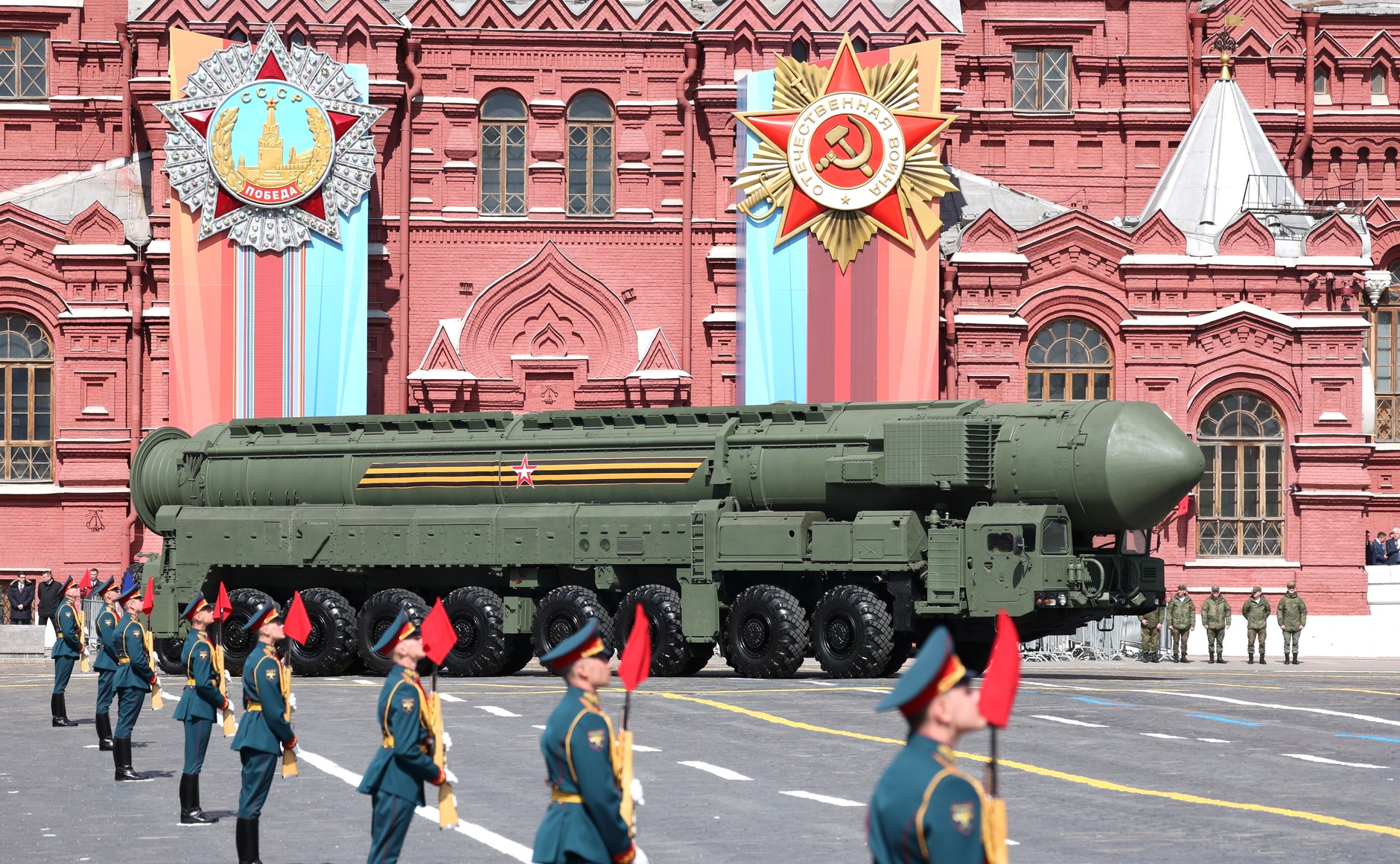
The war cult presented a sanitized war, erasing many of its complexities. Inconvenient and uncomfortable events such as the Hitler-Stalin Pact, Stalin’s incompetence at the beginning of the war, the scorched earth policy carried out by Soviet partisans, Stalin’s deportation of entire nationalities suspected of collaboration, the mass rape of German women by Soviet soldiers and many other ugly aspects of an unprecedentedly violent and brutal war were generally omitted. The story was simplified into a “Nazis were bad and Soviets were good” narrative.
Information about the Holocaust, in which up to 2.5 million Soviet Jews were murdered, was also suppressed, since the official commemorations focused on the heroism and the sacrifice of the entire Soviet people. Soviet leaders did not want to admit that the Nazis had singled out particular Soviet nationalities (Jews and Roma) for complete destruction.
No monument was built at Babyn Yar, the site of the mass murder of tens of thousands of the Jews of Kyiv in the fall of 1941, until 1976. When a monument was finally erected, it honored the “citizens of Kyiv and prisoners of war,” and did not mention Jews at all. It was not until after the fall of the Soviet Union that the Holocaust was publicly acknowledged by a monument at Babyn Yar.
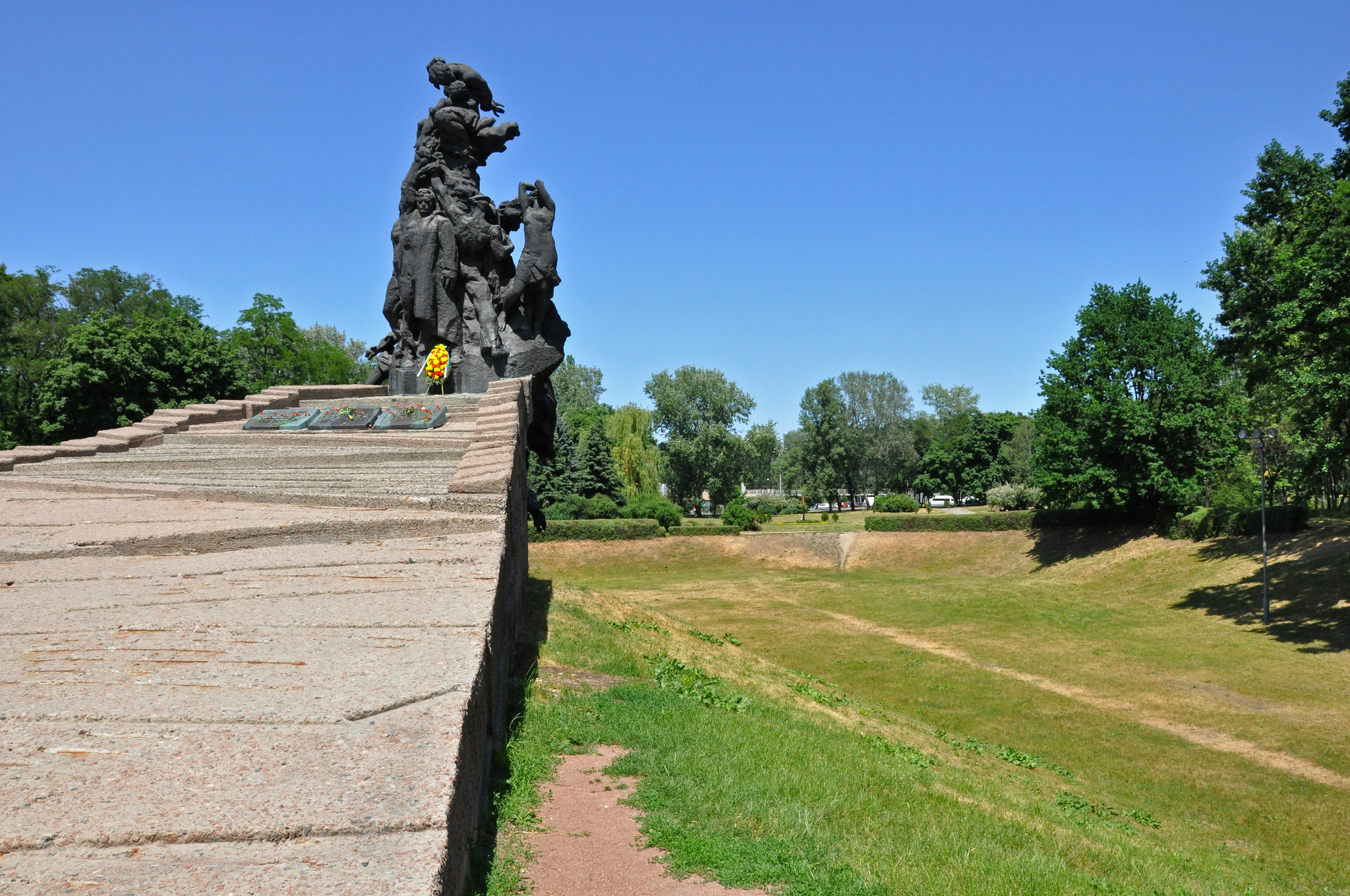
The Cult of the Great Patriotic War was, naturally, also a product of the Cold War, and the Soviet government’s official peace movement emphasized that because of the horrific experience of the world wars, the Soviet Union was particularly “peace-loving” and an active advocate for peace throughout the world.
Needless to say, the United States and other NATO nations saw this stance as a cynical ploy to accuse only the capitalist West of promoting war, while the Soviets themselves contributed actively to armed conflicts around the world and were building a massive nuclear arsenal.
Nevertheless, the official discourse of the Great Patriotic War was infused with this additional layer of “the defense of peace” and the idea that postwar Soviets valued peace more highly than the West because of their bitter experiences, especially of WWII.
The War in the Post-Soviet Era
When Mikhail Gorbachev came to power in 1985 and introduced the policy of glasnost, or openness, an unprecedented level of freedom of expression in the Soviet Union, the sanitized version of the Great Patriotic War myth came tumbling down. The newly emboldened Soviet press questioned all aspects of the war myth and brought to light the many atrocities committed by Stalin and Soviet soldiers.
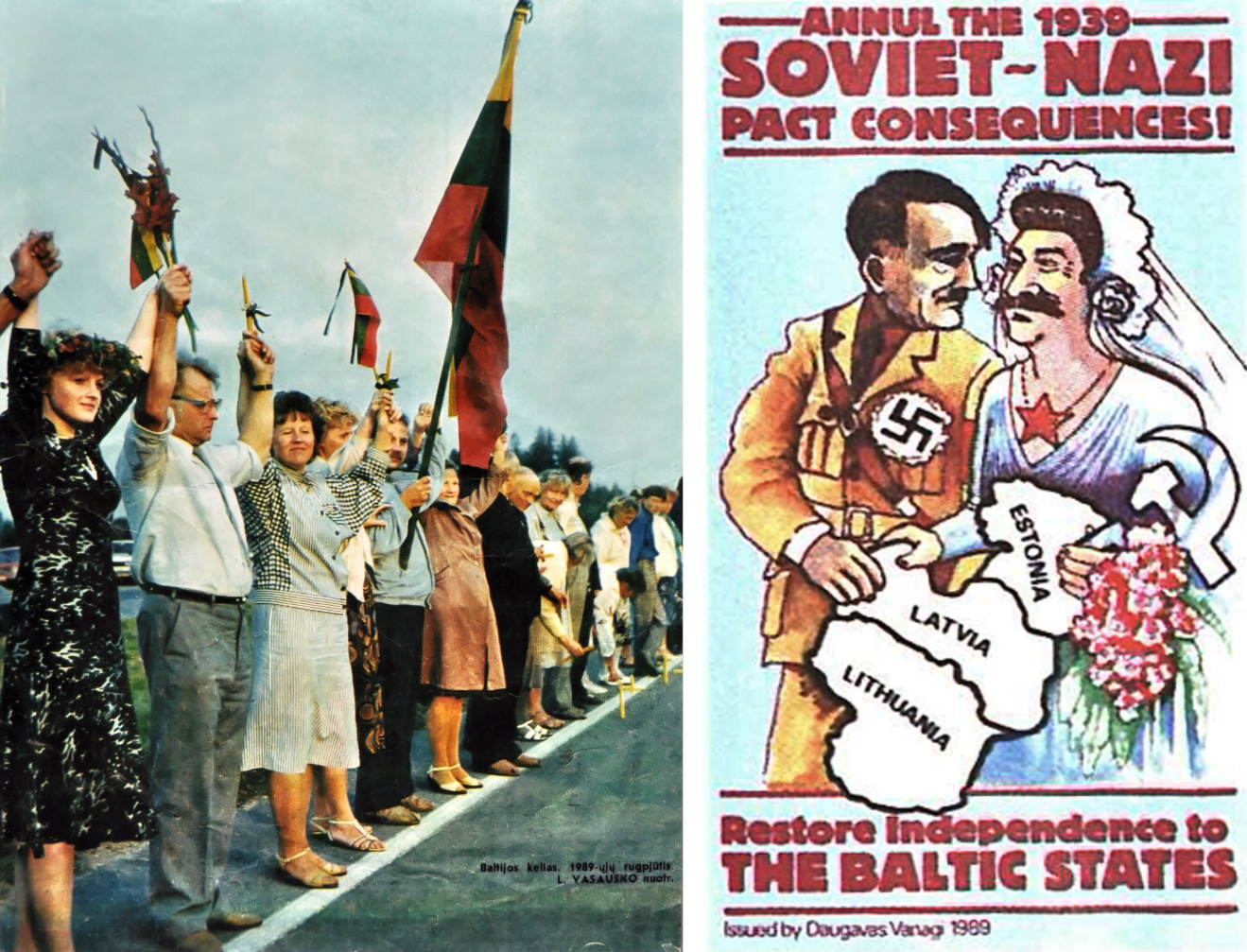
These revelations had significant political consequences. For example, on August 23, 1989, the fiftieth anniversary of the signing of the secret protocols of the Hitler-Stalin Pact, two million Estonians, Latvians, and Lithuanians formed a human chain from Tallinn to Riga to Vilnius, “The Baltic Way,” to underscore the illegal occupation of the Baltic states by the Soviet Union. Soon after, the three Baltic states declared independence from the Soviet Union, one of the many factors precipitating the fall of the Soviet Union in 1991.
Controlling the interpretation of the events of the Second World War was and remains a powerful political tool in Eastern Europe.
In the first decade after the fall of the Soviet Union, when Boris Yeltsin was president, freedom of the press continued, and a bewildering array of interpretations of the Second World emerged in Russia.
These “new revelations” included unfounded theories (for example, that Stalin was about to attack Nazi Germany and Hitler’s strike was preemptive), outright conspiracies, and a continued debunking of old Soviet myths. Many sensationalist publications and television shows reveled in exposing Soviet-era falsehoods about the war.
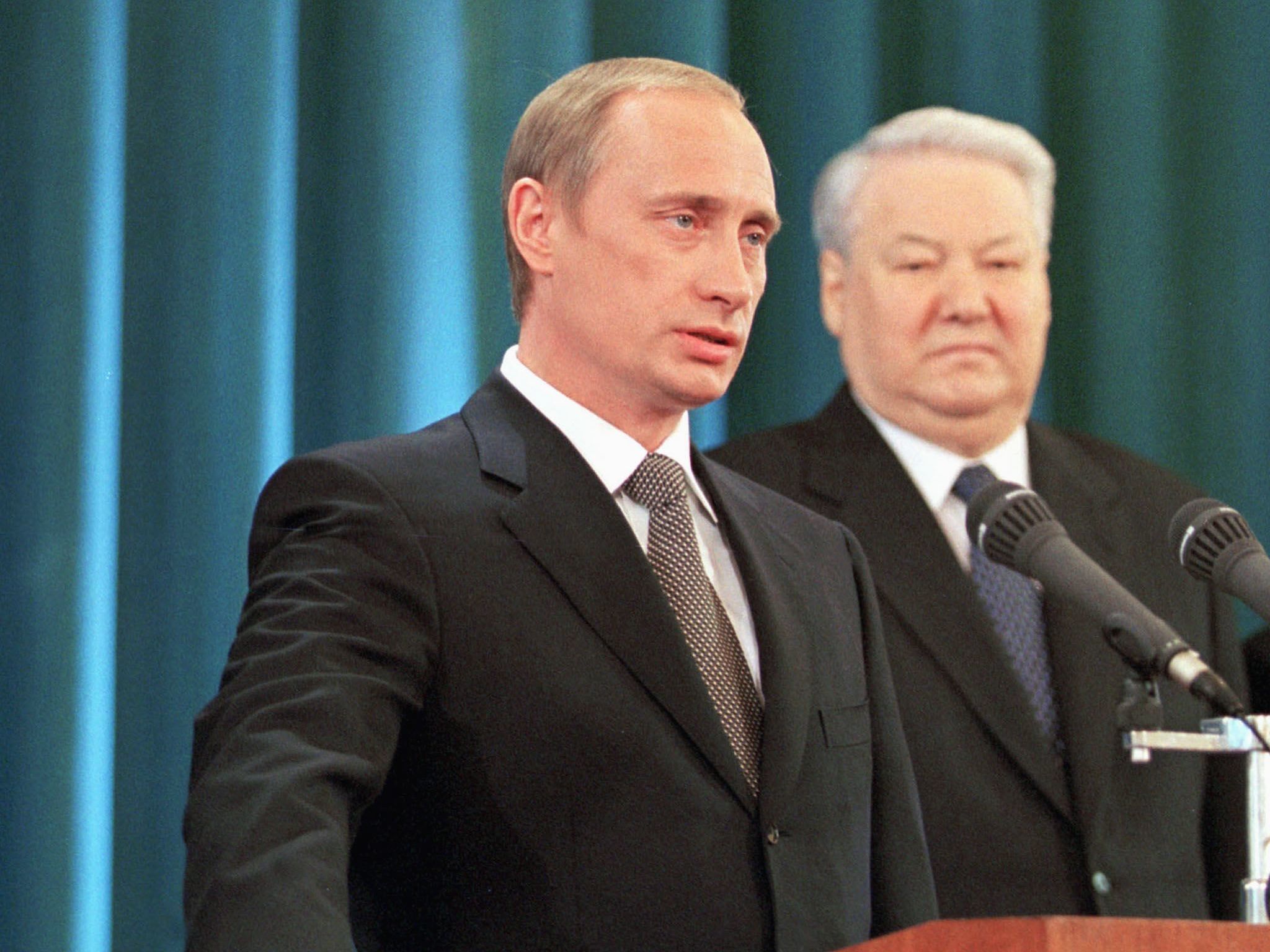
After Vladimir Putin was elected President in 2000, the general tone about the Great Patriotic War again began to change. The core of Putin’s ideology was Russian nationalism with an emphasis on a powerful Russian state. He saw the Revolutions of 1917 and the Civil War that followed (1918-1921) as a dangerous time of disunity, and the fall of the Soviet Union as a national tragedy.
On the other hand, the Great Patriotic War was the ultimate victory for the Russian state, as the Soviet Union came out of the war controlling new territories, and with expanded influence in Eastern Europe and universal recognition as a world power.
The victory in the Great Patriotic War once again became the cornerstone of Russian state legitimacy and state ideology in the early 2000s and, as a result, its interpretation was increasingly policed.
In 2009, then-President of Russia Dmitrii Medvedev created a presidential commission to prevent the “falsification” of history. In May 2014, two months after the Russian annexation of Crimea revealed Russia’s territorial ambitions in Ukraine, the Russian Parliament passed a law “Against Rehabilitation of Nazism.”
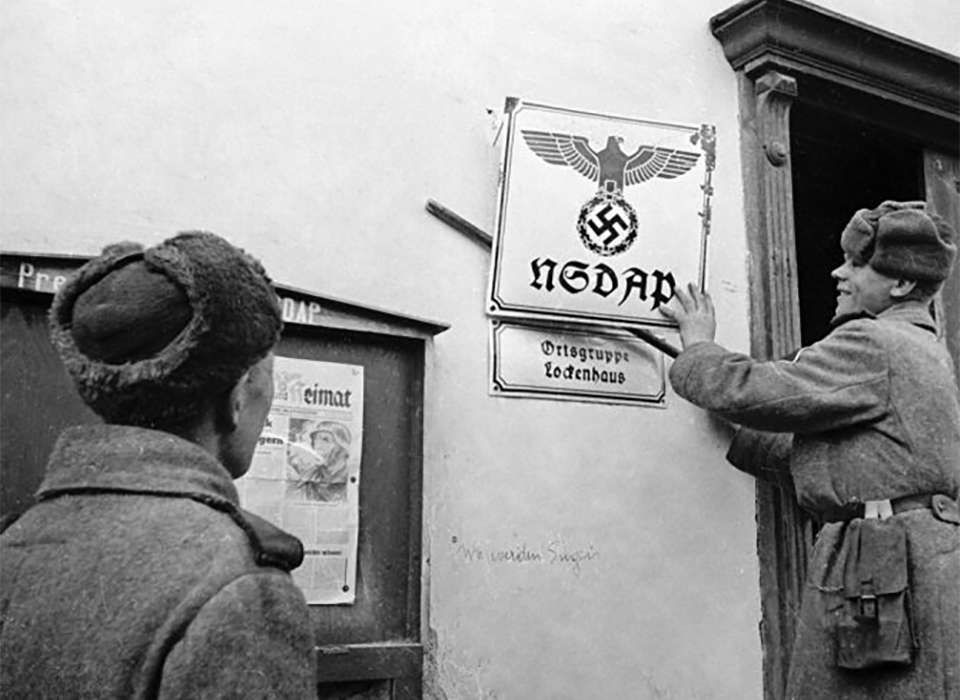
This law punished the spreading of “intentionally false” information about Soviet activities during WWII as well as the spreading of “disrespectful” information during war commemorations. The law thus sought to prevent the debunking of the Great Patriotic War myths and also to halt the open discussions that had taken place in the glasnost and Yeltsin eras. The May 2014 law transformed official narratives of the Great Patriotic War into sacred texts that could not be questioned.
In historical debates about WWII in the late 2000s and 2010s, anyone who questioned official Russian narratives was quickly accused of being “fascist.” These could be “internal enemies,” like the reporters at TV Rain who “disrespected” the anniversary of the Siege of Leningrad in January 2014 by asking whether it would have been better for the people of Leningrad if the city had been surrendered to the Nazis, or “external enemies,” like leaders in other countries who dismantled Soviet-era war monuments.
The tactic of calling anyone who dared to question the heroism of the Soviet war effort a fascist had both domestic and international repercussions. Domestically, TV Rain lost its license to broadcast specifically because of its inartful musings about the utility of enduring the Siege of Leningrad.
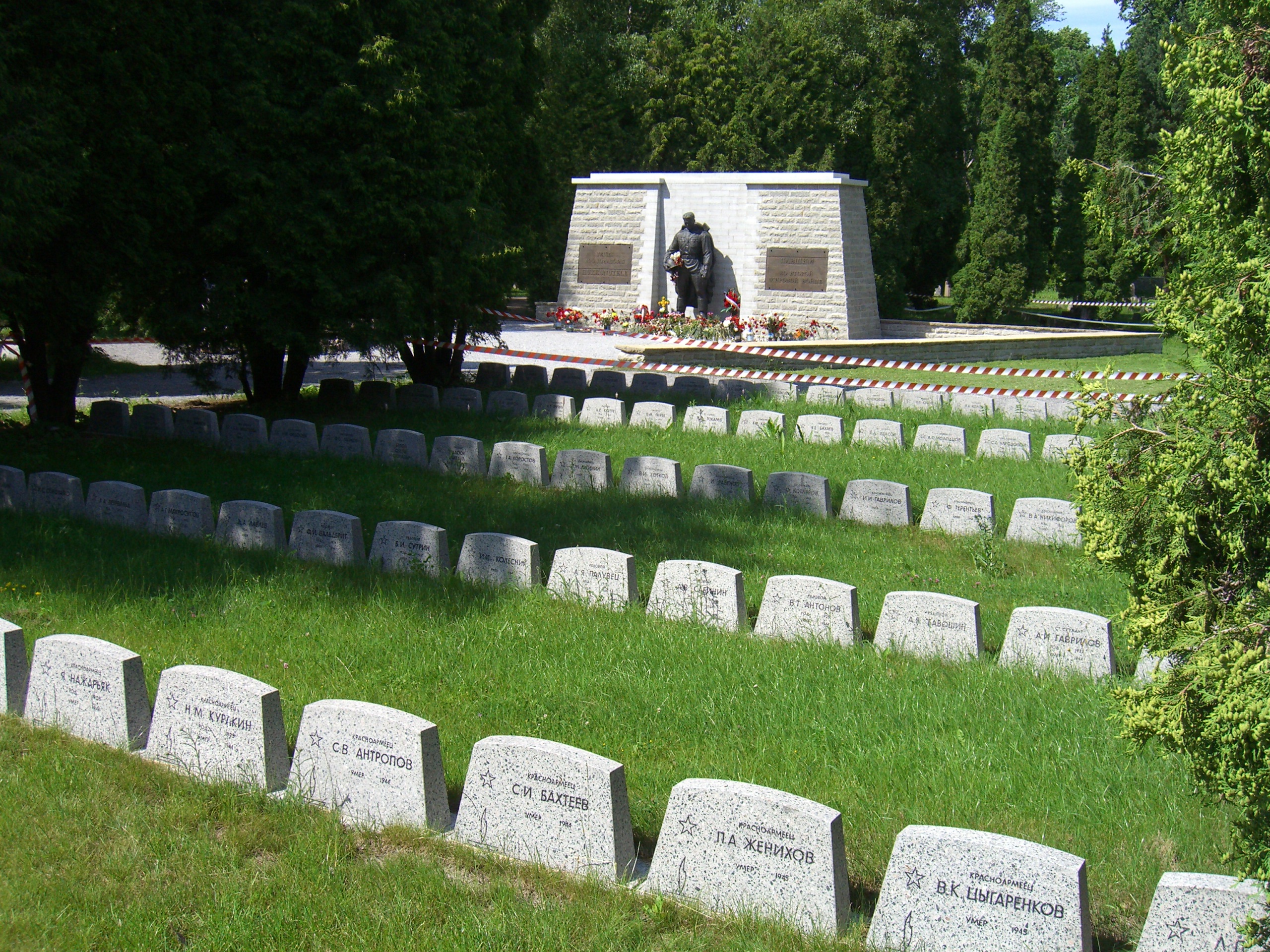
Abroad, in April 2007 in Tallinn, Estonia, there were several nights of protests and disturbances carried out by both Russian-speaking Estonians and Russians when the Estonian government decided to move the Soviet-era World War II monument, “The Bronze Soldier,” from the center of Tallinn to a military cemetery on the outskirts of the city. Shortly after this move, Estonia experienced a major cyber-attack in retaliation, carried out by pro-Russian elements.
Russian-speaking protestors called the Estonians “fascists” and the Russian press highlighted both the Estonian police’s mistreatment of the protestors, and the commemorations of the Estonian veterans of the 20th Waffen Grenadier Division of the SS a few months later, tarring Estonians as fascists in both the past and the present.
Notably, the Russian press also underscored the support of the United States for the Estonians in the months after the incident. Thus, the rhetorical patterns visible in Putin’s 2022 speech on the invasion of Ukraine had been employed by the Russian state and media for at least fifteen years, categorizing anti-Russian political forces in the former territories of the Soviet Union as “fascist,” and aligning the US and NATO with the defense of “fascism” while Russia ostensibly supported peace.
The War Never Ends
The Putin-era cult of “Great Patriotic War” emphasizes a cyclical Russian national war narrative that erases the distinction between past and present and imagines that the “Great Patriotic War” is always being fought.
A good example of this timeless phenomenon is the introduction of the “Immortal Regiment.”
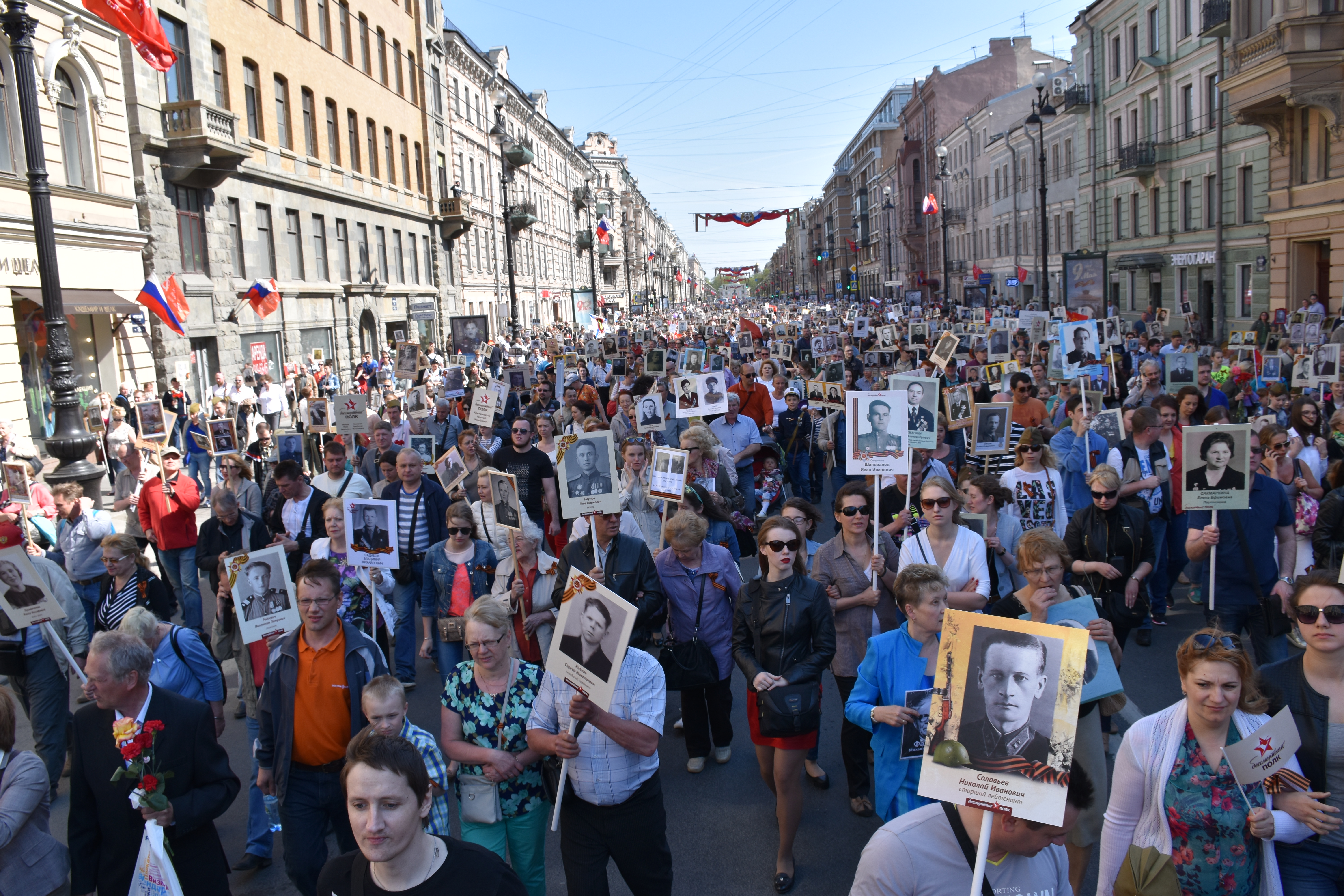
Originally a grassroots effort, but then coopted by the Russian state in 2015, the “Immortal Regiment” parade was created to respond to the fact that there were fewer and fewer veterans alive and able to march in Victory Day parades every May 9. The veterans’ children, grandchildren, and great-grandchildren marched instead, holding pictures of their loved ones who fought in the Great Patriotic War.
This moving act of family remembrance was wildly popular and soon became enmeshed in official Russian state celebrations of Victory Day. What is perhaps most striking about this event is the way that it collapses time, turning the Russians of the present into the veterans of the past through the ties of family love, and having contemporary citizens rehearse the political commitment of sacrifice (perhaps even of one’s life) on behalf of the Russian state.
All of these things taken together make the living, walking ghost of the Second World War a potent political and ideological tool in contemporary Russia. One must have an enemy or “other” against which to fight, and in Putin’s openly stated imperialist ideology, there was no national distinction between Russia and Ukraine.

Putin imagined Ukraine as an “inalienable part” of Russian history, and in his speech on February 21, 2022, three days before the announcement of military operations, he even claimed (completely erroneously) that Ukraine was created by Lenin and the Bolsheviks in 1917.
Putin then mobilized the Russian Army to commit horrific violence against these “fraternal” Ukrainians and propagandized a Russian population to accept this violence, though Russian media also hid the extent of the violence from the Russian population, not calling the invasion a “war” until many months later.
The Russian conception of the ever-present and ever-being-fought Second World War is crucial to legitimating the violence against Ukraine. Because portions of the Estonian and Ukrainian populations had actually fought for the Nazis and carried out murderous fascist policies between 1941-1945, they could be othered as Nazis both then and now.
Because NATO and other countries of the West (including of course Germany itself) support the Ukrainians now, and because the Ukrainians are “Nazis,” the entire West is Nazi, too. Ukrainian or Estonian participation in Nazi atrocities is conceived of as timeless.
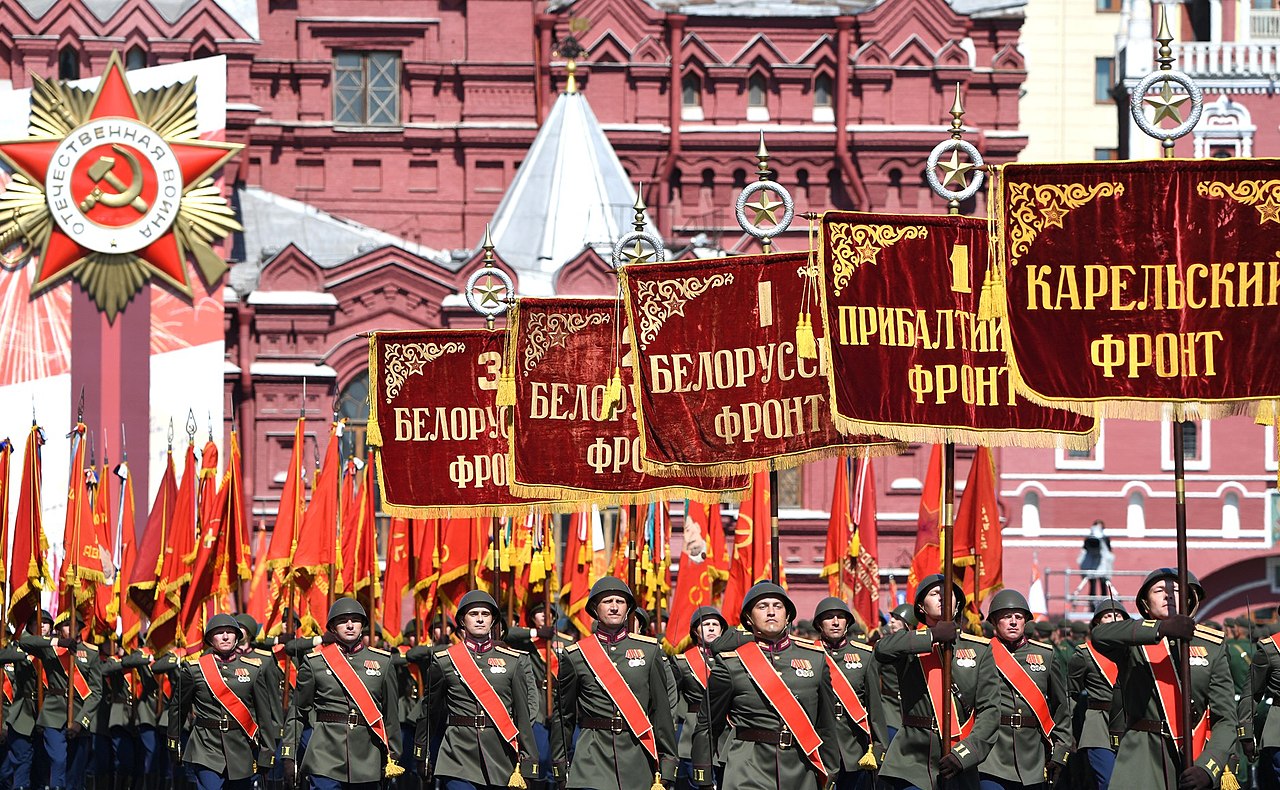
In the same way that the Immortal Regiment parade transforms the citizens of the present into the heroic Russian veterans of the Great Patriotic War, Russian rhetoric frames the Ukrainians fighting today as Nazi-others to be killed. In Russian ideology, this war is the Great Patriotic War and Russian righteousness cannot be questioned, no matter what horrific actions the Russian Army takes.
The sanitized official narrative of the Great Patriotic War coupled with the simplified “us” versus “them” moral vision, and the removal of the Second World War from its own specific time and place into “always,” creates a devastating and dangerous ideological mix that justifies and perpetuates the use of violence against Ukraine and beyond.
Jonathan Brunstedt, The Soviet Myth of World War II: Patriotic Memory and the Russian Question in the USSR (Cambridge University Press, 2021).
David Hoffmann, ed., The Memory of the Second World War in Soviet and Post-Soviet Russia (Routledge, 2021).
Nikolay Koposov, Memory Laws, Memory Wars: The Politics of the Past in Europe and Russia (Cambridge University Press, 2018).
Ivan Kurilla, “The ‘Immortal Regiment’: A ‘Holiday Through Tears,’ a Parade of the Dead or a Mass Protest?: Arguments Over the Meaning and Future of a New Holiday Ritual,” Russian Politics and Law, Vol. 57, No. 5/6 (2019), 150-165.
Nina Tumarkin, The Living and the Dead: The Rise and Fall of the Cult of World War II in Russia (Basic Books, 1994).
Anton Weiss-Wendt and Nanci Adler, eds., The Future of the Soviet Past: The Politics of History in Putin’s Russia (Indiana University Press, 2021).
Elizabeth A Wood, “Performing Memory: Vladimir Putin and the Celebration of World War II in Russia,” The Soviet and Post-Soviet Review, Vol. 38, No. 2 (September 2011), 172-200.

